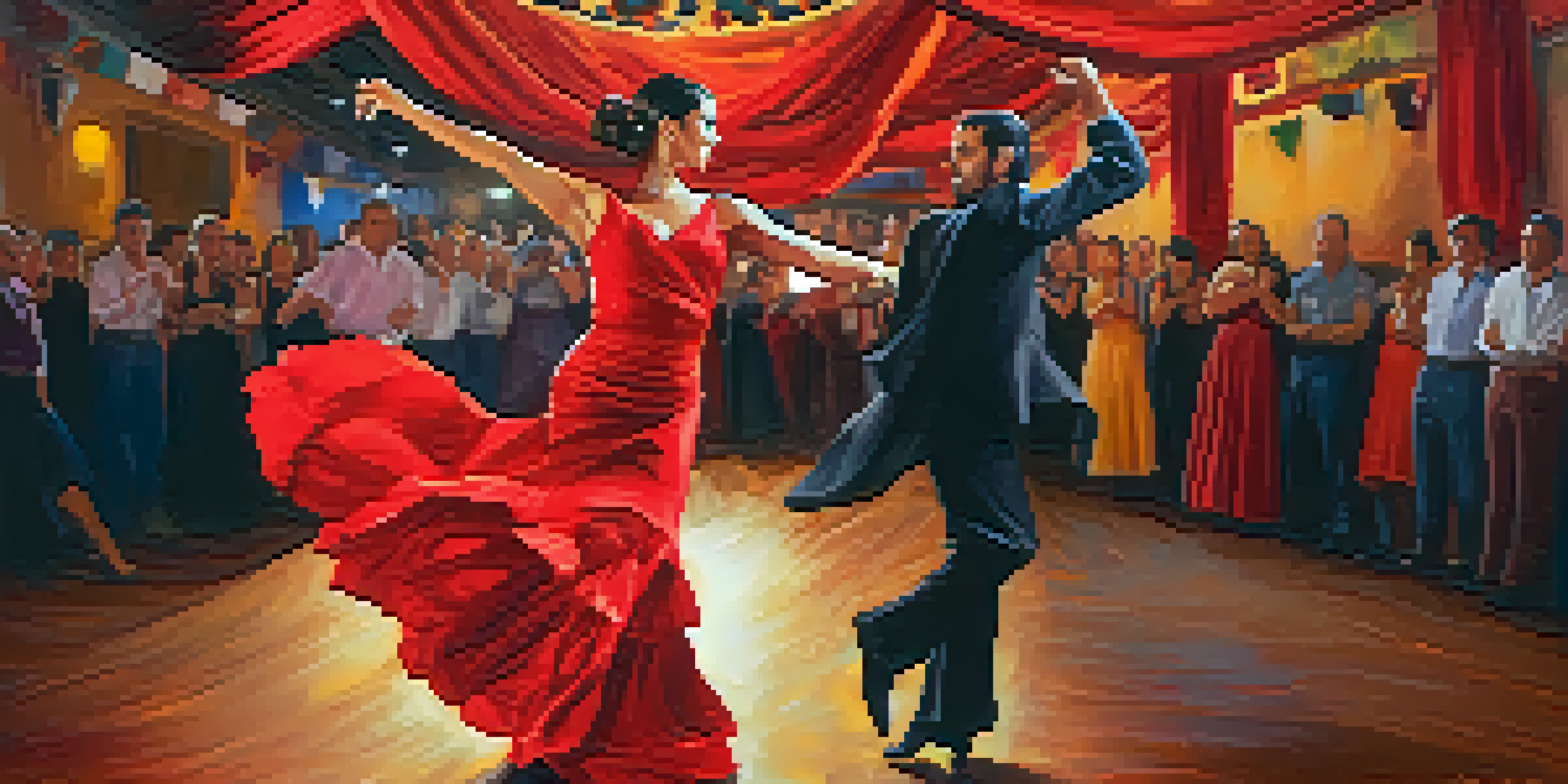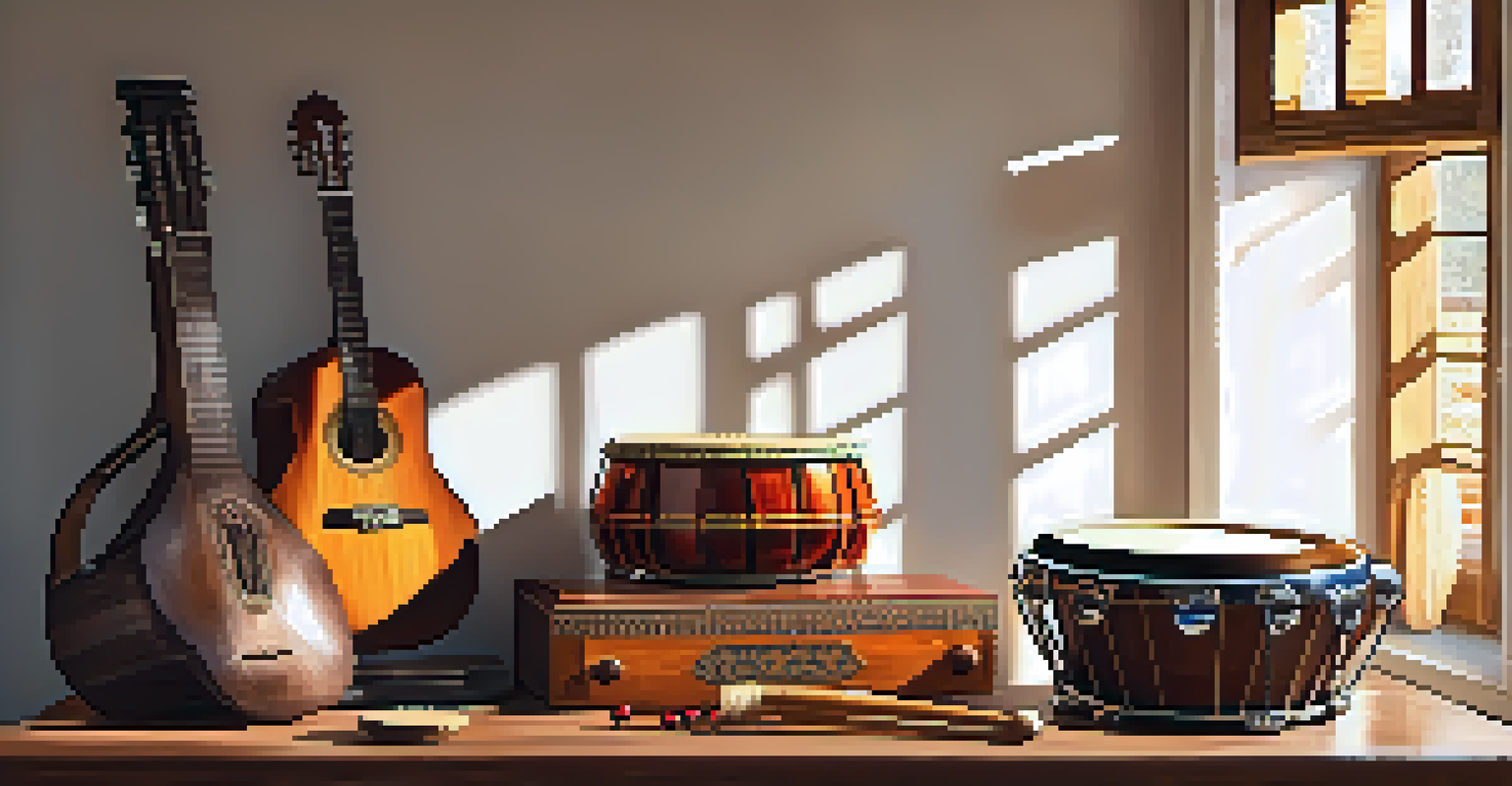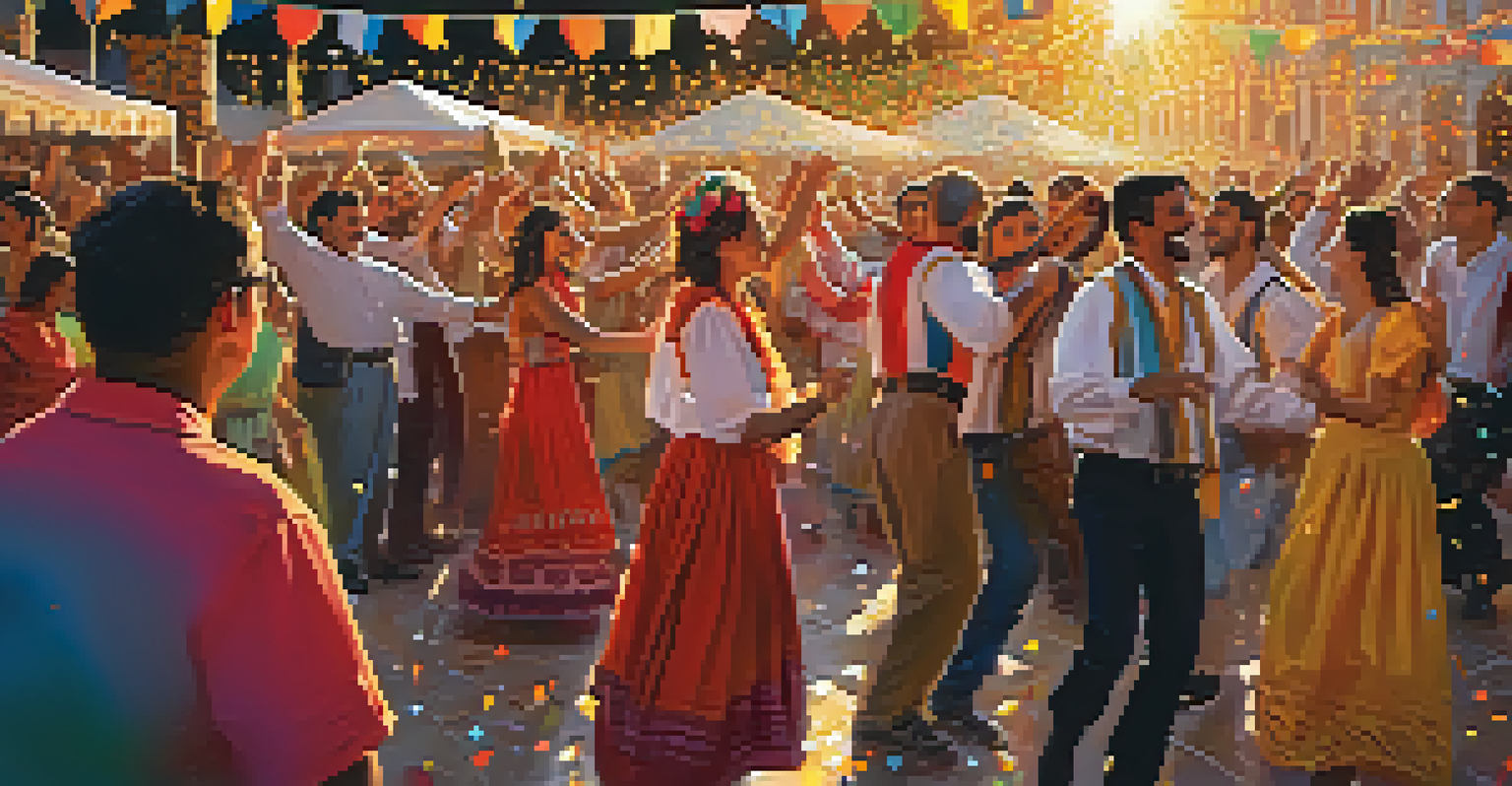Traditional Spanish Music: Cultural Exchange Through Rhythm

The Roots of Spanish Music: A Melting Pot of Cultures
Spanish music is a vibrant tapestry woven from diverse cultural threads. Its roots can be traced back to the influence of various civilizations, including the Romans, Moors, and indigenous peoples. Each group brought unique instruments, rhythms, and melodies that enriched the Spanish musical landscape.
Music is the shorthand of emotion.
For instance, the guitar, now synonymous with Spanish music, evolved from earlier string instruments introduced by the Moors. This blending of styles created a rich musical heritage that reflects the country's historical exchanges. As a result, traditional Spanish music is not just a genre but a celebration of cultural convergence.
Moreover, this fusion continues to evolve, attracting new influences from modern genres while maintaining its traditional essence. Whether it’s flamenco, jota, or sardana, each style tells a story of the past, making Spanish music a living history of cultural exchange.
Flamenco: The Heartbeat of Spanish Rhythm
Flamenco is perhaps the most iconic representation of traditional Spanish music, deeply rooted in the Andalusian culture. With its passionate guitar playing, powerful singing, and intricate dance, flamenco embodies the spirit of cultural exchange. It originated from the fusion of Gypsy, Moorish, and Andalusian influences, showcasing how different cultures can create something uniquely beautiful.

The rhythm of flamenco, often marked by claps and foot stomps, is not just music; it’s an emotional expression. Each performance tells a story of love, pain, and joy, resonating with audiences around the world. The improvisational nature of flamenco allows musicians to infuse their own experiences, making every performance a new creation.
Cultural Fusion in Spanish Music
Spanish music is a vibrant blend of influences from various cultures, creating a rich musical heritage that reflects historical exchanges.
Flamenco has also gained international recognition, influencing various artists and genres beyond its Spanish roots. This cultural export highlights how traditional music can serve as a bridge between communities, fostering understanding and appreciation across borders.
The Influence of Folk Music Across Regions
Spanish folk music varies significantly from one region to another, reflecting the local culture and traditions. Styles such as the jota from Aragon and the muñeira from Galicia showcase distinct rhythms and instruments. These regional differences illustrate how local heritage can shape musical expression, allowing for a rich diversity within Spanish music.
Without music, life would be a mistake.
Folk music often incorporates traditional instruments, such as the bagpipe in Galicia or the castanets in Andalusia, adding to its unique sound. These elements not only enhance the musical experience but also connect the audience to their cultural roots. By celebrating these regional styles, Spanish folk music fosters a sense of community and belonging.
Moreover, as musicians from different regions collaborate, there is a beautiful exchange of ideas and techniques. This blending of folk traditions creates a dynamic musical landscape that evolves while honoring its origins, showcasing the power of music to unite diverse cultures.
The Role of Dance in Spanish Music Traditions
Dance is an integral part of traditional Spanish music, often serving as a visual representation of the music’s rhythm and emotion. Styles like flamenco dance, with its intricate footwork and expressive movements, bring the music to life in a way that captivates audiences. This connection between music and dance highlights how rhythm can transcend mere sound and become a shared experience.
In many Spanish communities, traditional dances are performed during festivals and celebrations, reinforcing cultural identity. These dances often tell stories or celebrate historical events, allowing participants to connect with their heritage. The communal aspect of these performances fosters a sense of unity among people, as they come together to celebrate their culture.
Flamenco: A Cultural Icon
Flamenco embodies the spirit of Spanish culture through its passionate expression, showcasing the beauty of cultural convergence.
As Spanish music continues to evolve, new dance styles emerge, further enriching its landscape. Contemporary interpretations of traditional dances often incorporate modern influences, creating a fusion that resonates with younger generations while preserving the essence of the original forms.
Instruments That Define Traditional Spanish Music
Traditional Spanish music is characterized by a variety of unique instruments that contribute to its distinctive sound. The Spanish guitar, essential to flamenco, has a rich history and is celebrated for its expressive capabilities. Other instruments, such as the castanets, accordion, and even the tiple, add layers of complexity and texture to the music.
Each instrument used in Spanish music has its own story and cultural significance. For example, the tambourine-like pandereta is often found in folk music, enhancing the rhythm and inviting participation. This diverse array of instruments not only enriches the musical experience but also reflects the cultural exchanges that have shaped Spanish music over centuries.
As musicians experiment with blending traditional instruments with modern technology, the sound of Spanish music continues to evolve. This innovation keeps the music relevant and accessible to new audiences, ensuring that the legacy of these instruments lives on while adapting to contemporary tastes.
Cultural Festivals: Celebrating Spanish Music and Dance
Cultural festivals in Spain serve as vibrant celebrations of traditional music and dance, drawing locals and tourists alike. Events like the Feria de Abril in Seville and the Festival Internacional del Cante de las Minas in La Union showcase the richness of Spanish music. These gatherings provide a platform for artists to share their talents while fostering a sense of community and cultural pride.
During these festivals, traditional music and dance take center stage, offering a unique opportunity for attendees to immerse themselves in Spanish culture. The lively atmosphere, filled with music, laughter, and dance, creates lasting memories for participants. Such events also encourage the preservation of traditional practices by passing them on to younger generations.
Regional Diversity in Folk Music
Spanish folk music varies by region, highlighting local traditions and fostering a sense of community through its unique styles.
Moreover, cultural festivals often encourage cross-cultural exchange, inviting international artists to collaborate with local musicians. This blending of styles not only enhances the festival experience but also highlights the universal nature of music as a means of connection, transcending language and cultural barriers.
The Global Impact of Traditional Spanish Music Today
In today's globalized world, traditional Spanish music continues to influence and inspire artists across various genres. From pop to classical, elements of Spanish music can be found in works by musicians worldwide. This cross-pollination illustrates the enduring appeal of Spanish rhythms and melodies, showcasing their ability to resonate with diverse audiences.
Collaborations between Spanish musicians and artists from other countries have led to exciting new genres, such as flamenco fusion. This innovative approach not only keeps traditional music alive but also introduces it to new listeners. By blending different musical styles, artists create a fresh sound that respects the past while looking toward the future.

The global fascination with Spanish music has also led to a resurgence of interest in learning traditional instruments and dance. Music schools and online platforms now offer courses in flamenco guitar, Spanish dance, and more, empowering a new generation to connect with their cultural heritage. This continued exploration of Spanish music ensures that its rich legacy of cultural exchange remains vibrant and relevant in the modern world.